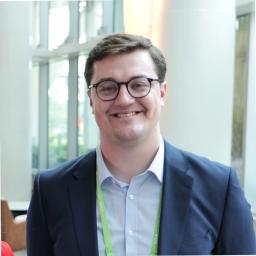New gene therapy insights driven by single-cell multi-omics
Dr. Priya Chockalingam discusses the complexities of cell and gene therapies and how single-cell multimodal analysis can efficiently characterize gene-edited products
7 May 2024

Cell and gene therapies represent one of the most exciting medical advancements in recent history. These ‘living drugs’ seek to correct the root cause of an illness at the molecular level by altering or restoring the function of cells in the body. By doing so, they not only offer the potential to provide a cure to a range of genetic disorders but also tackle various cancers and help fight infectious diseases.
However, these ground-breaking therapies are not without their challenges. As part of our Cell and Gene Therapy Feature, we spoke with Dr. Priya Chockalingam, Vice President and Head of Clinical Bioanalytics and Translational Sciences at Beam Therapeutics, to learn more about the complexities of gene-edited products and how single-cell multimodal analysis can help ensure their efficacy and safety.
Revolutionary but difficult to develop
While medically grouped together, cell and gene therapies differ in their approaches. Cell therapy involves transfusing a patient with healthy cells to replace or compensate for diseased cells. These cells, sourced either from the patient (autologous) or a donor (allogeneic), may undergo genetic modification ex vivo before they are expanded and infused into the patient. Gene therapy, on the other hand, refers to the introduction, removal, or alteration of genetic material within a patient’s cells to treat or prevent disease. In vivo gene therapies are administered directly to the patient using a vector, such as adeno-associated virus (AAV) or lipid nanoparticles.
Increasingly, therapeutic approaches involve a combination of both cell and gene elements, known as gene-edited cell therapy. For instance, specific cells such as T cells may be modified or enhanced with gene editing techniques before being introduced into a patient. With all these approaches, what distinguishes cell and gene therapies from other modalities is that they offer a one-time therapy: they have the potential to provide a permanent cure for diseases from a single treatment.
Nevertheless, the development of these therapies presents several challenges, principally due to the heterogeneity and complexity of cell and gene therapy products. Chockalingam takes the example of hematopoietic stem cells (HSCs), a type of stem cell that can be used to treat blood cell diseases either via allogeneic transplantation or by genetically correcting a patient’s own HSCs. “Cell lineage is one element that drives complexity – hematopoietic stem cells can differentiate into several different types of cells,” she says. The genetic correction of cells, by either vector gene addition or gene editing, can also present challenges. “Cells that are transduced with a lentiviral vector may differ in transduction efficiency and the number of copies incorporated into the genome,” she adds. “And cells edited with different cell editing tools may result in different on-target and off-target editing.”
There are also other considerations associated with gene editing, including zygosity, which arises from the potential of an intended edit to be successful on both alleles (homozygous), one allele (heterozygous), or neither. “When multiple edits are involved, we also have to worry about editing across the cell population and the co-occurrence of edits,” adds Chockalingam.
Comprehensive characterization at single-cell resolution
In the face of these challenges, the complete and thorough characterization of gene-edited products is critical to ensure the efficacy and safety of cell and gene therapies. Here, Chockalingam highlights the advantages of employing single-cell multi-omics to simultaneously measure multiple genotypic and phenotypic parameters.
“When you do bulk genome mix or bulk proteomics, it's all averaged data,” she asserts. “You're not getting at a single-cell level.” In contrast, single-cell multi-omics enables researchers to profile DNA, RNA, and protein simultaneously at a single-cell level, revealing cell-to-cell variability and offering much more comprehensive characterization. For example, using single-cell multi-omics – the distribution of zygosity, co-occurrence of edits, and translocations induced by the genome-editing system can be more accurately assessed. By profiling multiple molecules simultaneously, Chockalingam also notes how this approach can reduce the need and cost of individually employing different assays on various platforms.
Not only can single-cell multi-omic analysis streamline the assessment of critical quality attributes and accelerate the translation of cell and gene therapies but it could also be used for monitoring treatment response following administration. Chockalingam highlights its potential for monitoring cytokine release syndrome (CRS), a known adverse effect associated with certain cell therapies whereby the immune response becomes overactive or uncontrolled. “Other examples include neurotoxicity, on-target and off-target effects, and we could even follow minimum residual disease (MRD) in patients,” she adds. “And it could go beyond this to be used for diagnostic purposes, to make sure we have the right patients for a specific treatment.”
Next steps
Chockalingam is in no doubt that cell and gene therapy is set to become a mainstay of healthcare, but she acknowledges that there is still significant progress to be made. “We need to scale up these technologies, so we can reach many more patients and treat all the thousands of rare diseases that exist,” she says. “Then, the next step is to expand beyond rare diseases to go to other diseases, so more and more patients make use of them.”
Lowering the costs of cell and gene therapies, which currently far exceed those of traditional modalities, is also crucial for ensuring their accessibility to a broader population. For Chockalingam, the imperative is clear, “We must invest more in cell and gene therapies because this is the future of medicine. This is where medicine is going towards – correcting the diseases at the molecular level, and offering a one-time treatment,” she concludes.
